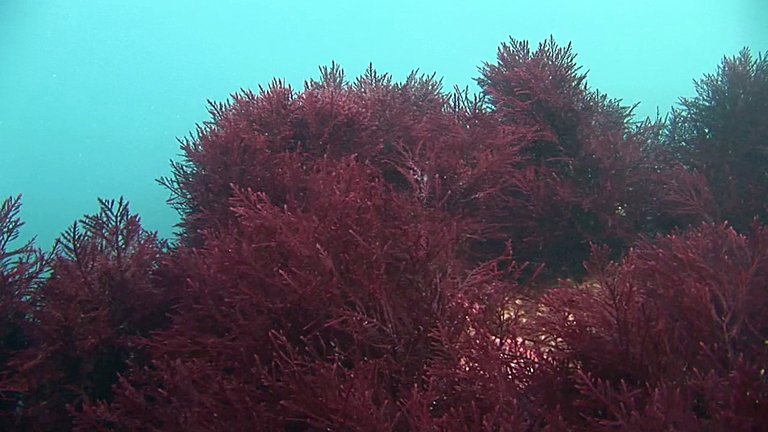Red grasses disappear on the Basque coast

The population of red algae Gelidium corneum of the Basque coast has suffered a serious decline in recent years. The data collected by the research group Itsas Bentos of the UPV/EHU show that in the last two decades the population has decreased by half in many places, going from 80% of presence in extreme cases to 5%.
"The underwater landscape is undergoing major changes; where there were formerly large algae grasses, there are now desert areas. We are suffering an important loss of productivity," explains the head of the research team, José María Gorostiaga. Conditions have changed in recent years. On the one hand, the temperature of the water has been tempered, with an increase of the average of August 1, 1ºC in the last three decades, reaching the highest temperatures in history (maximum 26, 2ºC in August 2003). Solar radiation has also increased, causing the Gelidium to yellow and bleach. The nutrients, for their part, have been reduced due to changes in the outcrops and to the reduction of the flow of water from the rivers. And other factors such as increased herbivores and storms also influence.
The Gelidium corneum is a large algae that is found in strongly beaten areas. It has great importance in the functioning of the marine ecosystem as a place of residence and shelter of other algae and animals. But its place is being occupied by other algae.
All these changes are causing the emergence of new species. According to the researchers, in 1991 the biodiversity of the Basque coast was composed of 90 species and in 2013 116 have been recorded. "The presence of more species is not always positive," explains Isabel Diez, a member of the research group. "In an ecosystem the positive is to maintain ecological functions and processes. That is, maintain productivity and biodiversity, but not only in terms of the number of species, but also in terms such as genetic or functional diversity. In fact, the new species that have entered our coast provide little biomass, since they are very small and of simple morphology. In addition, they are ephemeral and do not offer the necessary structure to protect fish and invertebrates".
Decline of Gelidium algae on the Basque Coast, UPV/EHU.
Buletina
Bidali zure helbide elektronikoa eta jaso asteroko buletina zure sarrera-ontzian











